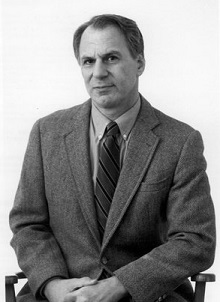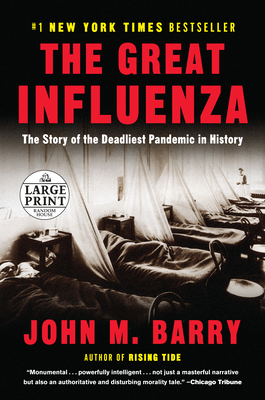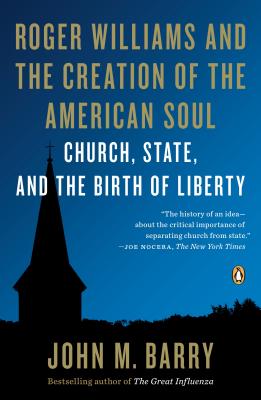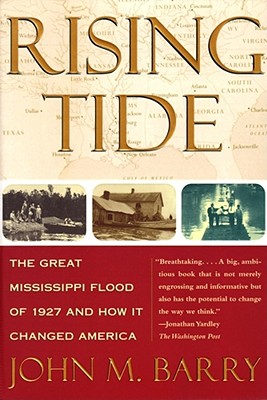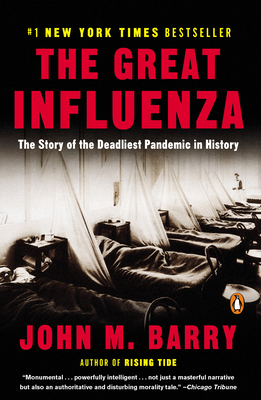
The Great Influenza:The Story of the Deadliest Pandemic in History
Interview with John M Barry
May 8, 2020Sign Up to listen to full interview.
About John M Barry
John M. Barry is a prize-winning and New York Times best-selling author whose books have won multiple awards. The National Academies of Sciences named his 2004 book The Great Influenza: The story of the deadliest pandemic in history, a study of the 1918 pandemic, the year's outstanding book on science or medicine. His earlier book Rising Tide: The Great Mississippi Flood of 1927 and How It Changed America, won the Francis Parkman Prize of the Society of American Historians for the year's best book of American history and in 2005 the New York Public Library named it one of the 50 best books in the preceding 50 years, including fiction, nonfiction, and poetry. His books have also been embraced by experts in applicable fields: in 2006 he became the only non-scientist ever to give the National Academies Abel Wolman Distinguished Lecture, a lecture which honors contributions to water-related science, and he was the only non-scientist on a federal government Infectious Disease Board of Experts. He has served on numerous boards, including ones at M.I.T's Center for Engineering Systems Fundamentals, the Johns Hopkins Bloomberg School of Public Health, and the Society of American Historians. His latest book is Roger Williams and The Creation of the American Soul: Church, State, and the Birth of Liberty, a finalist for the Los Angeles Times Book Prize and winner of the New England Society Book Award.
His books have involved him in two areas of public policy. In 2004, he began working with the National Academies and several federal government entities on influenza preparedness and response, and he was a member of the original team which developed plans for mitigating a pandemic by using "non-pharmaceutical interventions"-- i.e., public health measures to take before a vaccine becomes available. Both the Bush and Obama administrations have sought his advice on influenza preparedness and response, and he continues his activity in this area.
He has been equally active in water issues. After Hurricane Katrina, the Louisiana congressional delegation asked him to chair a bipartisan working group on flood protection, and he served on the Southeast Louisiana Flood Protection Authority East, overseeing levee districts in metropolitan New Orleans, from its founding in 2007 until October 2013, as well as on the Louisiana Coastal Protection and Restoration Authority, which is responsible for the statewide hurricane protection. Barry has worked with state, federal, United Nations, and World Health Organization officials on influenza, water-related disasters, and risk communication.
His articles have appeared in such scientific journals as Nature and Journal of Infectious Disease as well as in lay publications ranging from Sports Illustrated to Politico, The New York Times, The Washington Post, Fortune, Time, Newsweek, and Esquire. A frequent guest on every broadcast network in the US, he has appeared on such shows as NBC's Meet the Press, ABC's World News, and NPR's All Things Considered, and on such foreign media as the BBC and Al Jazeera.
Before becoming a writer, Barry coached football at the high school, small college, and major college levels. Currently Distinguished Scholar at Tulane's Bywater Institute and a professor at the Tulane School of Public Health and Tropical Medicine, he lives in New Orleans.
Interview Summary
Viruses may be lethal, but it is the deadly combination of powerful lies, ignorance and fear that eventually kills more people. The flu outbreak in the spring of 1918 rapidly became a pandemic that ended up killing more people in 24 weeks than the HIV virus has killed in as many years.
While the making of the virus was a natural phenomenon, the making of the flu pandemic of 1918 was entirely human. In his award-winning book, John M. Barry weaves a detailed and well-researched story of the deadliest pandemic to this day.
We will probably never know the true account of how many people died, 50 million or 100 million or even more, but every estimate has been revised higher in the last century. What was more horrifying than the terrible loss of life was the fact that between 8% and 10% of all young adults living then may have been killed by the virus.
In a gripping and insightful account, Barry explains how the American medical education and research went from one of the worst in the world to world-class in merely three decades. He goes on to describe how dedicated and determined scientists at John Hopkins University and Rockefeller Institute and other newly established medical universities advanced the science of medical discoveries.
Key Topics
- What was the status of American medical science in the early 20th century?
- How did medical research advance and “scientific medicine” take root?
- What institutions played key roles in the advance of virology and immunology research?
- Who were the leading scientists and what were their approaches in finding cure for the influenza?
- What leads to the outbreak of influenza and what leads to the rapid spread of the disease?
- What role did the army, media, public health officials, federal and local governments play in the rapid spread of the disease?
- How did the U.S. army affect the spreading the disease worldwide?
- Why was is so hard to find cures for the “filterable agent” and what were the scientific challenges?
- What lessons can we learn from the rapid spread of the Spanish flu in 1918 and how we can prevent from becoming a pandemic again?
- What happens to citizens when powerful people lie or mislead in the event of a disaster?
